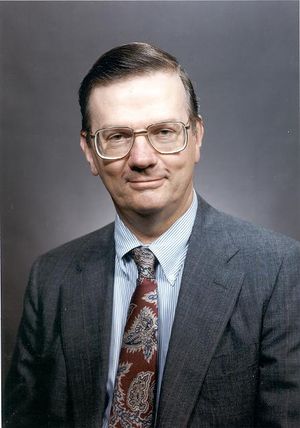Richard W. Dixon
- Birthdate
- 1936/09/25
- Birthplace
- Hubbard, OR, USA
- Associated organizations
- Bell Labs
- Fields of study
- Optics
- Awards
- IEEE Medal for Engineering Excellence
Biography
Richard W. Dixon was born in Hubbard, Oregon, September 25, 1936. He received the A.B. degree, summa cum laude, from Harvard College in 1958. During the academic year 1958-59, he was the Harvard College Henry Russell Shaw Traveling Fellow. He received the M.A. and Ph.D. degrees in Applied Physics from Harvard University in 1960 and 1964, respectively. During 1964-65, he was a post-doctorate fellow with Nobel Laureate Professor N. Bloembergen at Harvard.
Upon joining AT&T Bell Laboratories, Murray Hill, New jersey in 1965, Dr. Dixon became concerned with the interaction of light and elastic waves in solids and liquids. This work led both to practical optical modulators and deflectors, and to a more fundamental understanding of the acousto-optic interaction, nonlinear acoustics, magnetoacoustics, etc. In 1968, he became a supervisor in the Electroluminescent Device Department, with responsibility for the development of semiconductor diode light emitting devices, specifically red- and green-emitting GaP.
In 1973, Dr. Dixon became a supervisor in the Gallium Arsenide Laser Department with responsibility for the device aspects of gallium arsenide communications laser development, and in 1979 he was appointed head of the Optoelectronics Devices Department. In 1984, he became director of the Lightwave Devices Laboratory, with responsibility for the development of optical devices for use in AT&T optical fiber communications systems. During these periods, systematic improvement of GaAs and InP-based semiconductor laser performance and reliability were among the fundamental goals of these organizations. Laser lifetimes subsequently improved from seconds to millions of hours, thus helping to enable their application worldwide in terrestrial and undersea fiberoptic telecommunications systems, as well as in consumer products like audio and video disk players.
From 1987 to 1989, Dr. Dixon was director of the Advanced Technology Development Laboratory with responsiblity for lightwave device packaging, smart systems and automation for lightwave devices and packaging, and related activities. From early 1989 to mid-1991, he was again director of the Lightwave Devices Laboratory, with responsibility for development and early manufacture of sources and detectors in AT&T. Since June 1991, he has been director of the Lightwave Platforms and New Products laboratory with responsibility for managing the evolution of common platforms and new products.
Dr. Dixon was a Fellow of the IEEE, and a member of the American Physical Society, and the American Association for the Advancement of Science. He has been general chairman of the IEEE Device Research Conference (1975). He holds 15 patents and was author of more than 60 published articles. He received the 1993 IEEE Medal for Engineering Excellence.
Dr. Dixon was married to Rosina Berry Dixon, M.D. They had three children, Erica, Douglas and Andrew. Recreational interests included fly-fishing, especially in his native Oregon.
